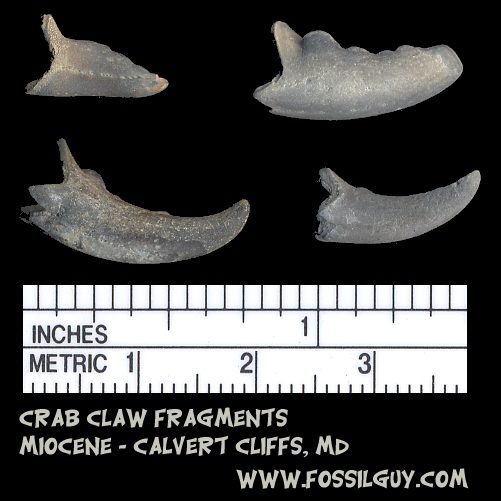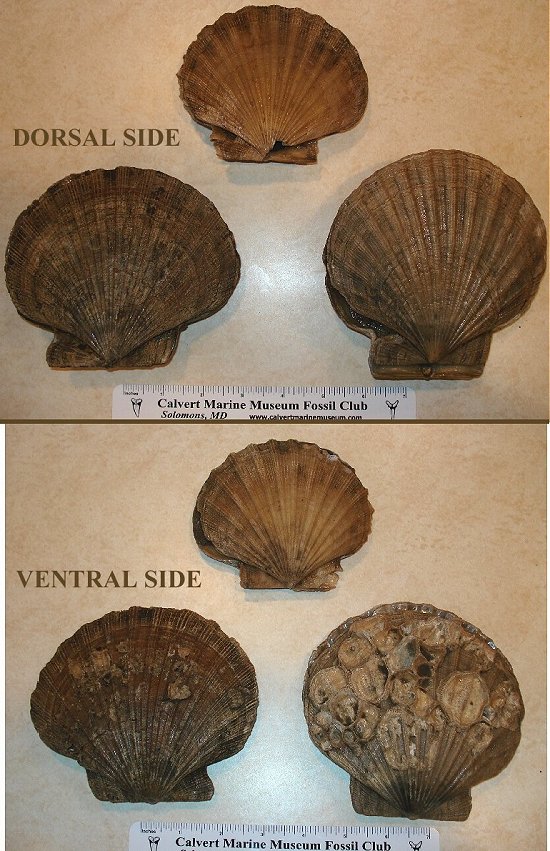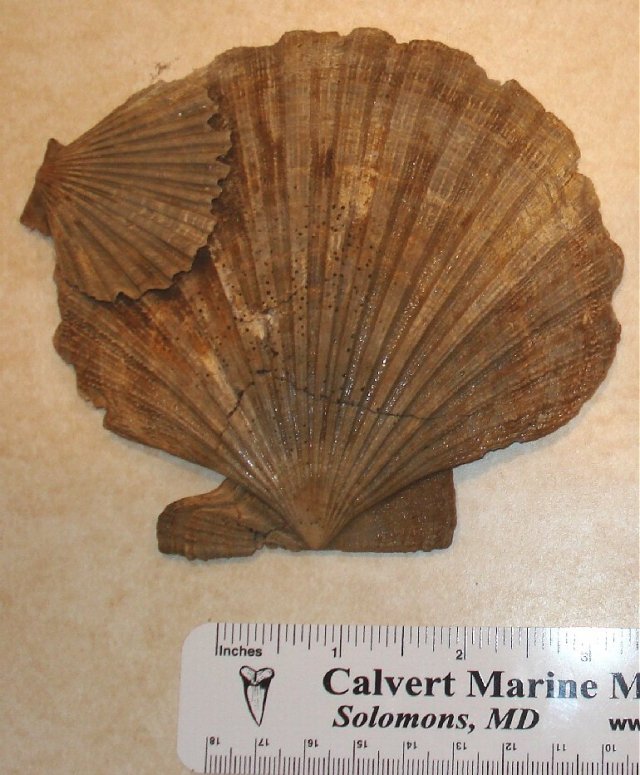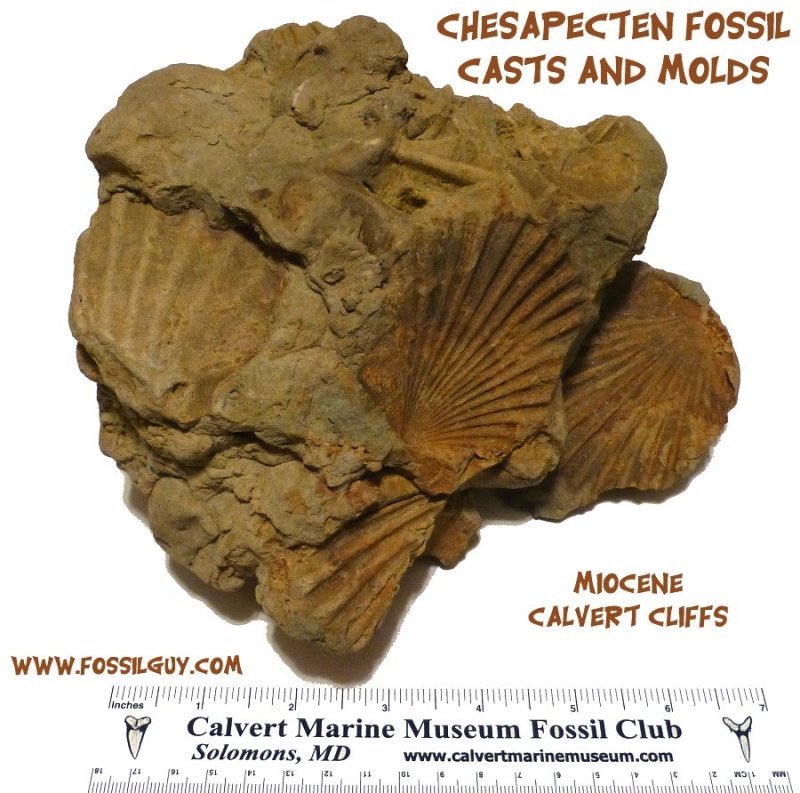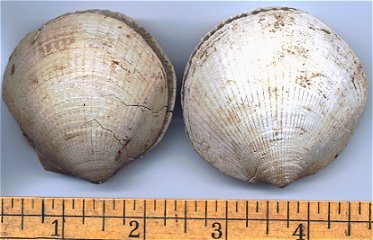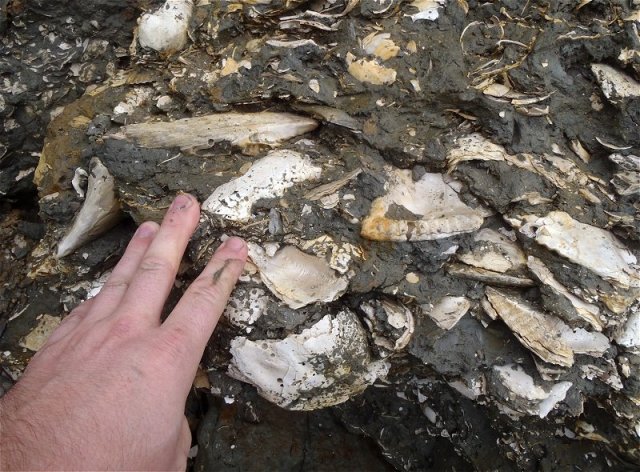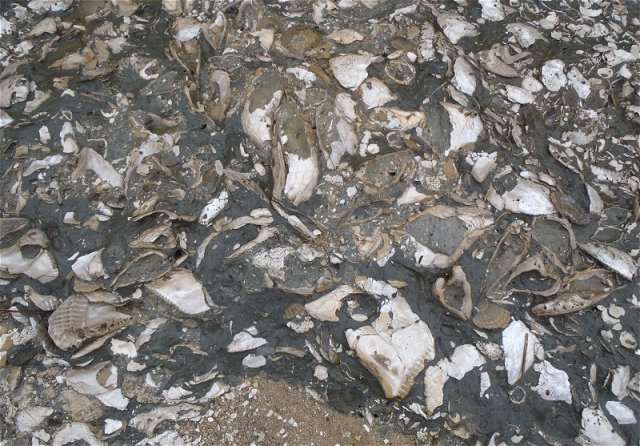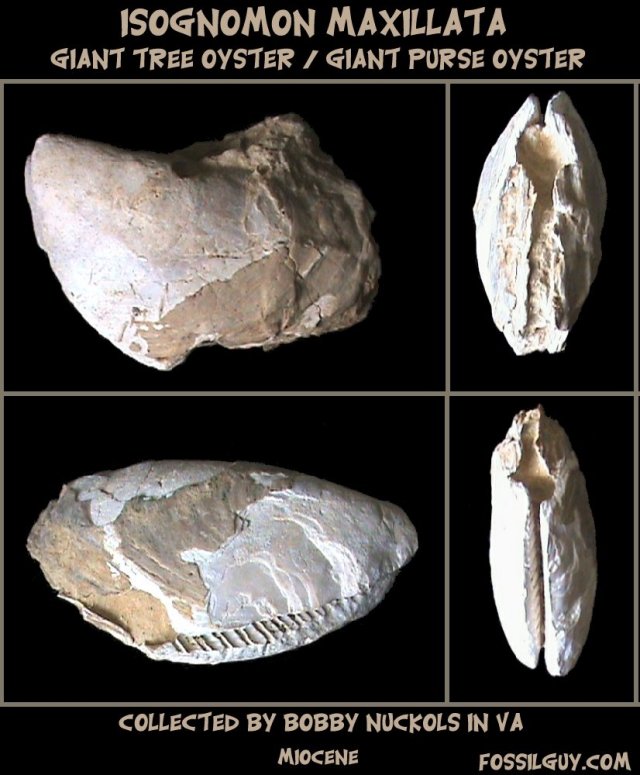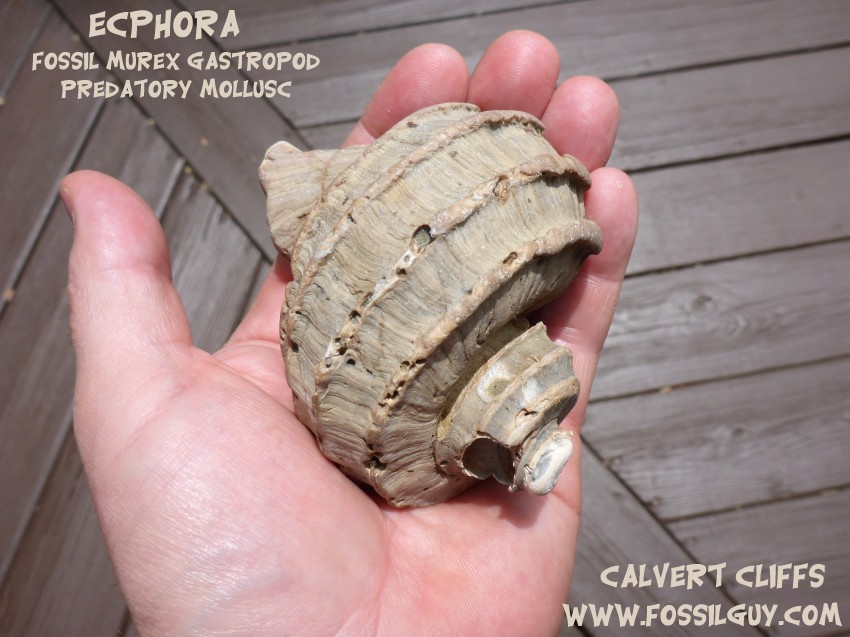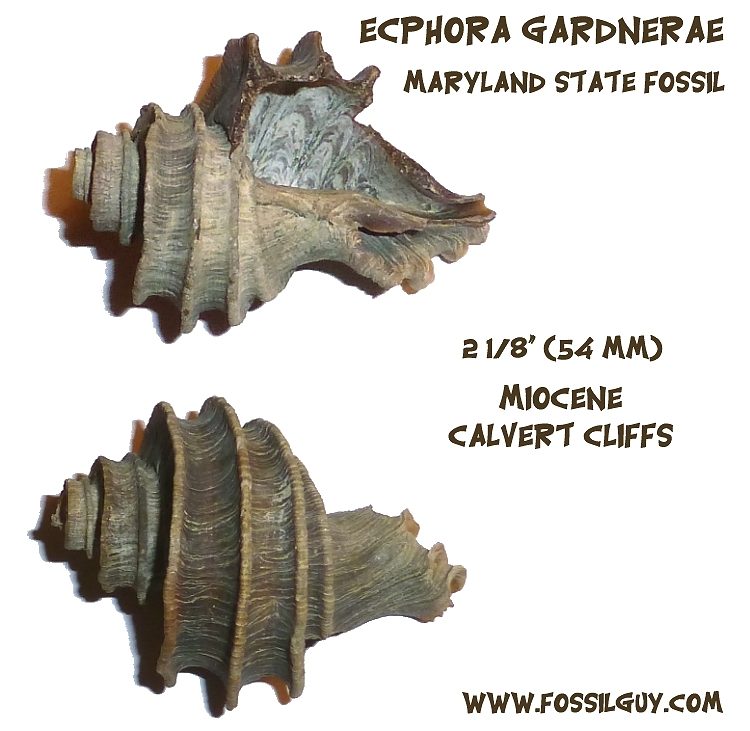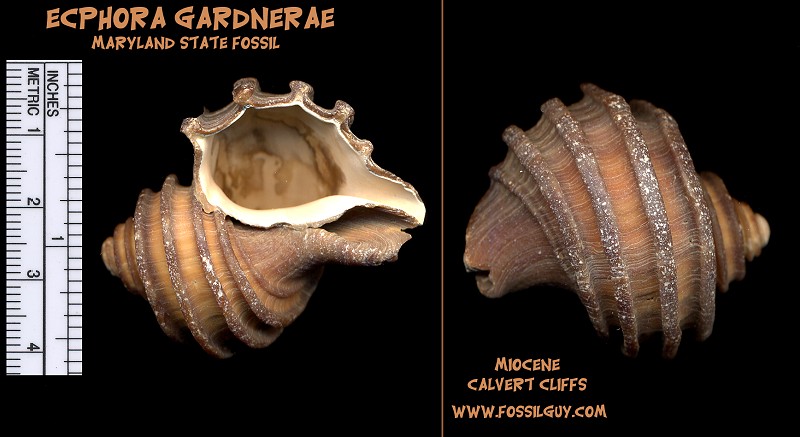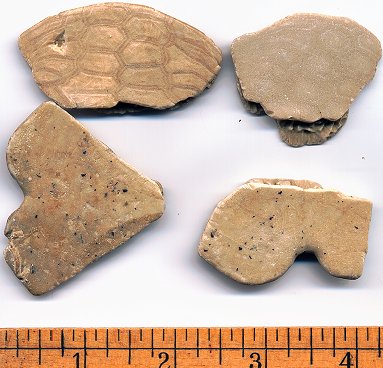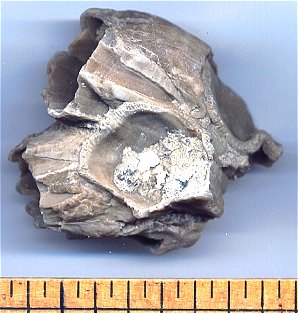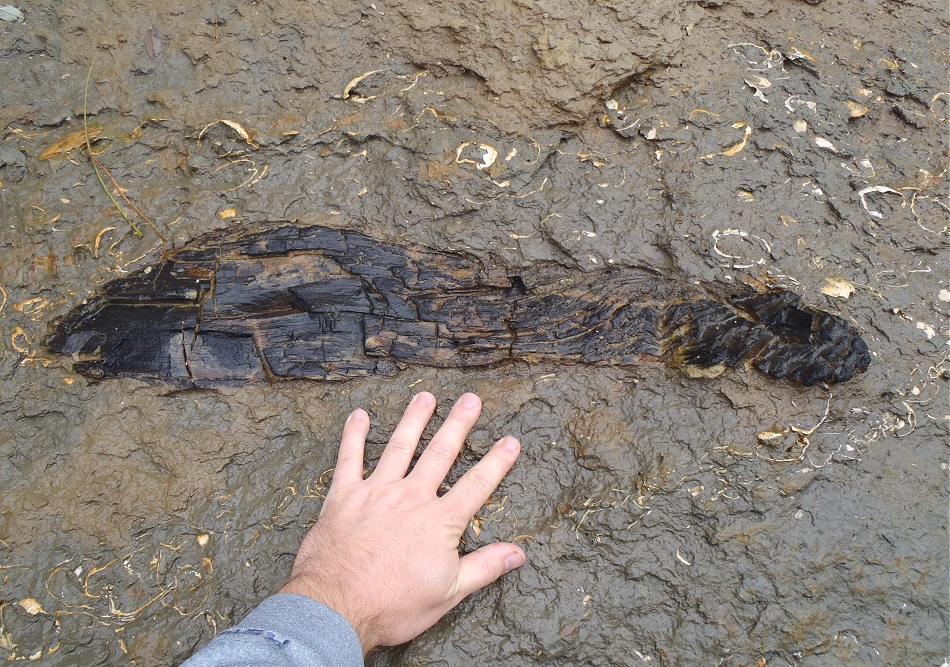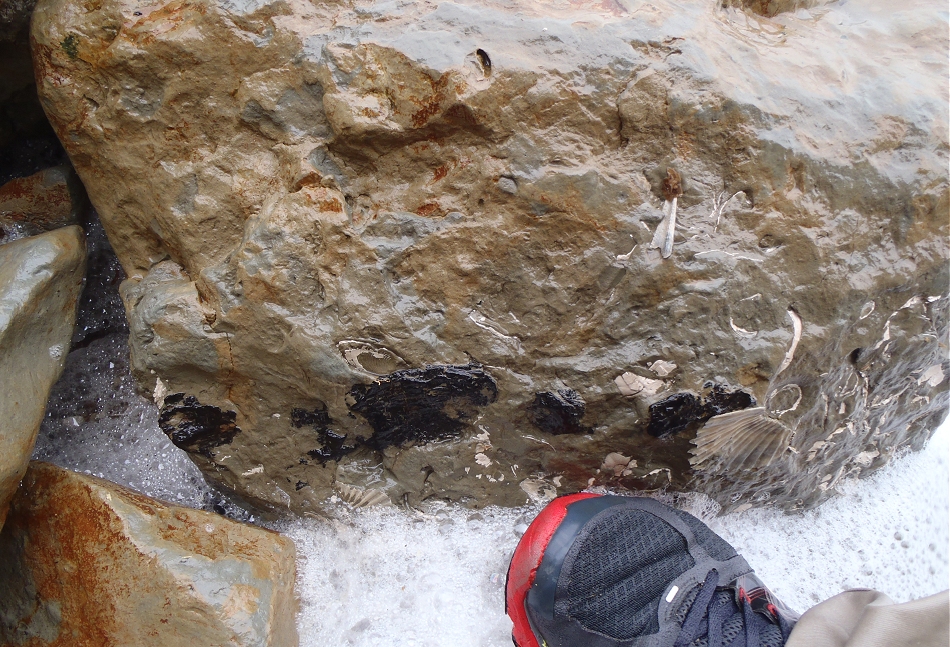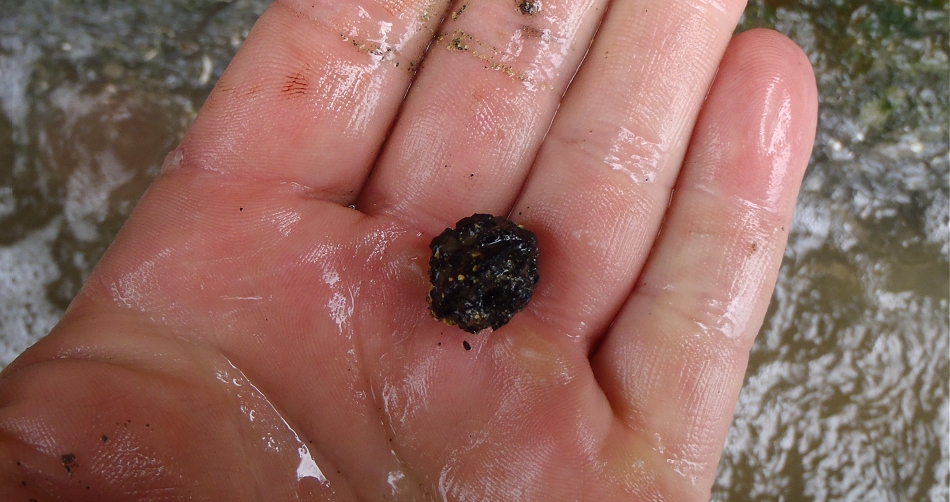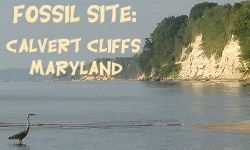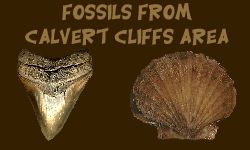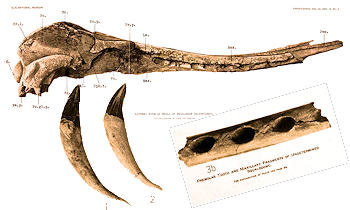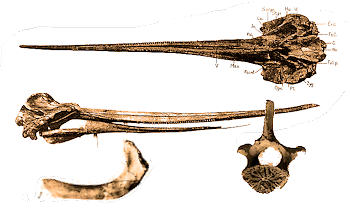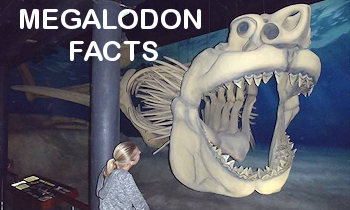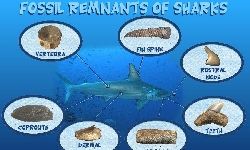
Fossil Invertebrate Identification Guide for the Calvert Cliffs of Maryland and the Horsehead Cliffs of Virginia.
Invertebrate fossils are extremely common along the cliffs. Entire shell beds are present. Most invertebrates are bivalves, such as oysters and scallops, and gastropods. The Maryland state fossil is even a gastropod, the Murex shell.
Invertebrates
Click on the type of vertebrate fossil or scroll down to browse:
Or go back to the
MAIN Calvert Cliffs Page
Crustaceans
Fossilized crab claw pieces are failry common along the Calvert Cliffs.
Crab claw fragments are fairly common, but are small and often overlooked for shark teeth. They are usually hollow and have a bluish or tan color.
For additional images of crab claw fragments, go to the Aurora Invertebrate page.
Bivalves (shells)
Bivalves are the most common fossil found along the cliffs. Entire layers of the cliffs are made of them. Below are some of the more common bivalves found.
Chesapecten nefrens
Scallop
These fossil chesapecten scallop shells were found whole laying in a fresh fall. They tend to break easily.
This shell has a tiny one cemented to it. Kind of neat!
In some places around the Choptank and St. Marys formation, sections of rock contain 100's of casts and molds of the scallop shells.
Glycymeris sp. Bivalve
Identification based on Glaser (1979, p22-23)
These fragile bivalves, often with both halves still attached, are abundant
in certain zones along the cliffs.
These fragile bivalves, often with both halves still attached, are abundant in certain zones along the cliffs. They will quickly fall apart if not preserved.
Isognomon maxillata (Deshayes)
Oyster
The common name for this fossil oyster is the Giant Tree Oyster or the Giant Purse Oyster.
Identification based on Glaser (1979, p22-23).
These large oyster shells are the index fossil for the Eastover Formation. They are also found in the Calvert and Choptank formations.
In certain spots along the Choptank, they literally cover the entire ground, and you have to walk on them.
These shells are usually white and flaky. Due to their fragile nature, they are difficult to find with both halves attached.
This oyster genera is characterized by the large grooved ligamental area (place where the two shell halves attach).
Layer of isognomon fossils, tree oysters. This layer is chalk full of them. Calvert cliffs
This layer of isognomon fossils, or tree oysters is found along the Choptank Formation.
This is a view of a front and back of a single shell from a specimen.
This is how they are typically found.
Notice the large groves in the ligmental area, the part that attaches to the other.
This is a well preserved specimen with both halves still attached. It was found by Bobby Nuckols in VA. He was nice enough to let me use an image of it for this site.
Gastropods
Ecphora sp.
Extinct Gastropod - Murex Shell
Ecphora Gardnerae is the Maryland State fossil. Their shells are intricately shaped. They are very fragile, and are often found broken.
This ecphora a larger fossil ecphora shell. Usually ones this size are found in fragments. It is approximately 4" wide.
This ecphora fossil has a nice bright orange color.
Echinoderms
Sand Dollars
If you collect anywhere along the Choptank, you are bound to encounter fragments like these.
They are sand dollar fragments. Occasionally you can still make out the patterns on them.
Complete ones are next to impossible to find.
These are pieces of fossil sand dollars.
Coral
Fossil coral fragments are occasionaly found washing in the surf at the Calvert Cliffs. The more common type of coral is Astrhelid.
Barnacles - Balanus sp.
Barnacles are often found at the Cliffs. Sometimes they are attached to fossil shells and bone.
Plants - Lignite
Lignite is a very low grade form of coal that retains it's original wood structure. The type of lignite present at the Calvert Cliffs area is called
Xyloid Lignite, or fossil wood. This type of lignite is not yet compacted into the higher grade lignite. It hasn't been buried deep enough or long enough.
Xyloid Lignite is usually geologically young, and comes from Tertiery sediments, such as the lignite found in the Miocene Chesapeake Group - Calvert, Choptank, and St. Mary's formations.
At the Calvert Cliffs area, most of the lignite is from Cypress trees that grew in cypress swamps along the ancient shores.
The large amounts of Cypress trees indicate a much warmer climate along the Chesapeake Bay in the past.
If one looks at the cliffs and chunks of cliffs, you will see small dark objects which are mushy to the touch. This is lignite.
This is fossil lignite about 7 feet up in the calvert cliffs. This large chunk is from a cypress tree.
Fossil lignite from the Calvert Cliffs. This is a section of cypress tree eroding out of a cliff chunk that has fallen
Xyloid Lignite Seeds
In one small section of the Chesapeake group, fossil seeds are found throughout a section of cliffs. I'm not sure what these are. They look like little walnuts. I wouldn't rule out cypress seeds, but really have no idea of the plant they came from.
A small section of cliffs has these fossil seeds in them. This is the center of the seed. The outside shells are a little bigger. The lignite is very brittle and quickly flakes apart.
Recommended Books for Fossils and Nature of the Calvert Cliffs

The Geology and Vertebrate Paleontology of Calvert Cliffs, Maryland
Stephen J. Godfrey (Volume editor) - 2018
This is the latest comprehensive review of the fossils of Calvert Cliffs. This volume includes fossil sharks, skates, and rays. It also has ray-finned fish, crocodiles, and sea cows.
The shark section is incredible! The second volume is also about about Miocene Turtles and Cetacea. This is a technical publication, for paleontologists and avid fossil collectors of the Calvert Cliffs.
The volumes are published online and can be downloaded FREE at the openSI website.
Once at the site, search for ISSN 1943-6688 for the 1st volume and ISSN 1943-6688 for the 2nd volume.
Outdoor and Nature Books about the Chesapeake Bay
Thesea are good read to explore the surrounding Chesapeake Bay area when your are done fossil hunting!
Related Content
About the Author
Contact Us
To ask Questions about Paleontology, Fossil Identification, Image Use, or anything else, email us.
Fossilguy.com is very active on Facebook, you can also message us there!
We don't buy or sell fossils, so please don't email us asking about the value of a fossil or fossil purchases.
Visit us on Social Media:
Enjoy this website?
Consider a Paypal / Credit Card donation of any size to help with site maintenance and web hosting fees:
Privacy Policy and Legal Disclaimer
Back to the TOP of page
© 2000 - 2025 : All rights reserved
Fossilguy.com is a participant in the Amazon Services LLC Associates Program, an affiliate advertising program designed to provide a means for sites to earn advertising
fees by advertising and linking to amazon.com



 Bivalves
Bivalves
 Gastropods
Gastropods
 Other Inverts
Other Inverts Plants
Plants
